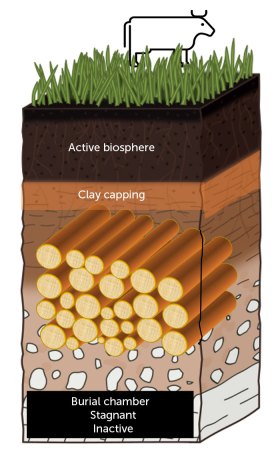Extreme Climate Survey
Scientific news is collecting questions from readers about how to navigate our planet’s changing climate.
What do you want to know about extreme heat and how it can lead to extreme weather events?
“I remember standing there just looking at it,” says Zeng, a climate scientist at the University of Maryland. He recalls thinking, “Wow, do we really need to continue our experiment? The evidence is already here, and better than we could do.”
That trunk was once part of an eastern red cedar that pulled carbon dioxide from the air and turned it into wood about 3,775 years ago, researchers report Sept. 24. Science. Buried under two meters of clay soil for millennia, the log retained at least 95 percent of that carbon, the study estimates.
“Scientists and entrepreneurs have long considered wood burial as a climate solution. This new work shows that it is possible,” says Daniel Sanchez, an environmental scientist at the University of California, Berkeley, who was not involved in the study. “High-sustainability, low-cost climate solutions like these hold tremendous promise for combating climate change.”
New solutions are much needed. Reducing greenhouse gas emissions is not enough to meet global climate targets, according to the Intergovernmental Panel on Climate Change (SN: 1/9/16). In addition, about 10 gigatons of atmospheric carbon must be captured and stored each year by 2060. Plants store about 220 gigatons of carbon dioxide each year just by growing, but most of this is released back into the atmosphere through decomposition. Preventing just a portion of that decomposition by burying the wood can help achieve this goal. But that potential relies on finding conditions that would prevent air, water and microbes from breaking down that carbon long enough to make a difference.
The ancient record gives researchers a clue. Zeng suspects that the largely impermeable clay soil covering the region helped prevent oxygen from reaching the trunk, even at relatively shallow depths. “This type of land is relatively widespread. You just have to dig a hole a few meters down, bury the wood and it can be stored,” he says.
Burying wood can cost $30 to $100 per ton of CO2researchers estimate. That simplicity and cost, Zeng says, makes wood vaults more practical than developing direct air capture technology, which costs $100 to $300 per ton of CO2. If the conditions that preserved the Canadian log can be replicated—which is still unclear—buried biomass from discarded wood and sustainable harvesting could sequester up to 10 gigatons of carbon per year, the researchers estimate.
Despite finding the ancient trunk, Zeng’s team carried out their planned experiment and is now closing the analysis, in part to figure out best practices. But the trunk itself exemplifies the arched promise of wood, he says. “Now we have the evidence to say ‘yes, it’s ready to be implemented’.”
#thousandyearold #log #shows #burying #wood #fight #climate #change
Image Source : www.sciencenews.org
